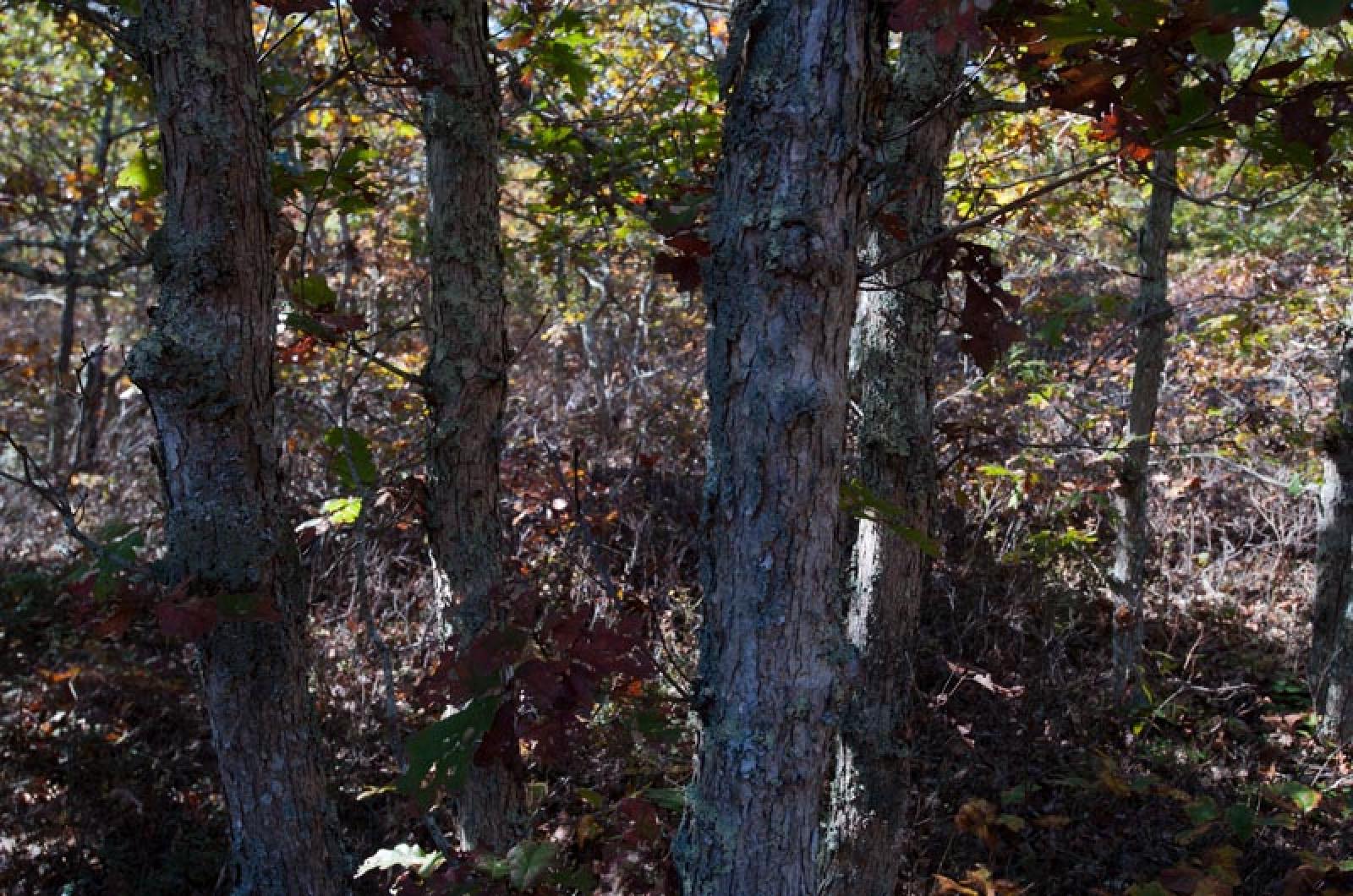It is time to get the to bottom of it.
If you have driven the West Tisbury-Edgartown Road, or ridden a horse or bicycle or walked on the adjoining state forest bike path, you’ve experienced something of historic and geologic significance. We know that the Island is an incredibly peaceful place abundant in natural wonders, however, one specific wonder channels my interest. As you traverse this hilly route, you pass through special land formations called frost bottoms.
Frost bottoms — also called frost pockets — create the topography of this area. Resulting from geological forces that shaped the Island during the last ice age, frost bottoms (like Islanders in general) have some wild and unique attributes. They also explain the roller-coaster contours in this neighborhood, and the origins of road names like Deep Bottom Road and Waldron’s Bottom Road.
Oriented generally north-to-south, these narrow valleys often lead to the fingers of the great ponds on the Island’s south shore. They are small gorges that were formed by water, after the glaciers retreated and melted, and can be 20 to 30 feet lower than the surrounding landscape.
And while this does not make the adjoining terrain mountainous by any means, they do contribute in a very interesting way to the Island’s geologic story — in both the past and present. They have developed their own microhabitats and unique assemblages of weather, flora and fauna.
Consider the climatic conditions in these frost bottoms, which can seem completely out of season and feature temperature extremes that are outrageous.
“The time is out of joint!” Shakespeare might have said about these chilly, low-lying depressions had he discovered one on a hot summer’s day. And in other prose, he noted, “The third day comes a frost, a killing frost. . .”
Frost bottoms need not wait for three days for a frost, since frost can come every day of the year, no matter what the season. Summer frosts are possible, and temperature variations in a frost bottom in just one day can be up to 70 degrees.
Spring comes late there, and leaf-out can be delayed well into June — sometimes not until July. Fall settles in earlier, with vegetative senescence occurring before plant neighbors outside of the bottoms.
It is the shape of the frost bottoms that encourages the settling of cold air, especially at night. As day comes, temperatures rise more slowly in these lowlands. Only the heartiest plant species, including scrub oak, blueberry, black huckleberry and herbaceous plants can survive.
Plant life is stunted, and these areas have even been described as tiny tundras. Trees struggle, appearing underdeveloped due to both temperature and frost, which damages them enough to reduce vertical growth. Shrubbier forms of trees are the norm.
These special conditions do, however, provide an important benefit for certain animals. Most famous among them are the rare moths that may or may not be in residence in a given year. The late leaf-out provides tender leaves for food for some southern moth species that are at their northernmost range here. These exotic species of moths are provided a fresh and tender food supply, which is necessary because they could not stomach the tannin-rich leaves of the more mature trees outside of the frost bottoms. And scrub oak, which thrives in these bottoms, is a larval plant for some of the more rare species. In the Wintucket Cove frost bottom, more than 10 species of rare moths have been recorded.
Frost bottoms, with their sloping hills and short growing season, were not well suited for farming, so were not cleared, plowed or otherwise altered by human hands. People have, however, worked to protect them. Many are safeguarded by conservation and well researched by curious scientists, though from time to time you can expect to see those moths and their special habitats vilified when they get in the way of a development project.
That’s one type of bottom line. But the bottom line for this naturalist is that you can bet your bottom dollar that these illogical, unexpected, irreplaceable habitats are worth protecting!
Suzan Bellincampi is director of the Felix Neck Wildlife Sanctuary in Edgartown, and author of Martha’s Vineyard: A Field Guide to Island Nature.





Comments (4)
Comments
Comment policy »